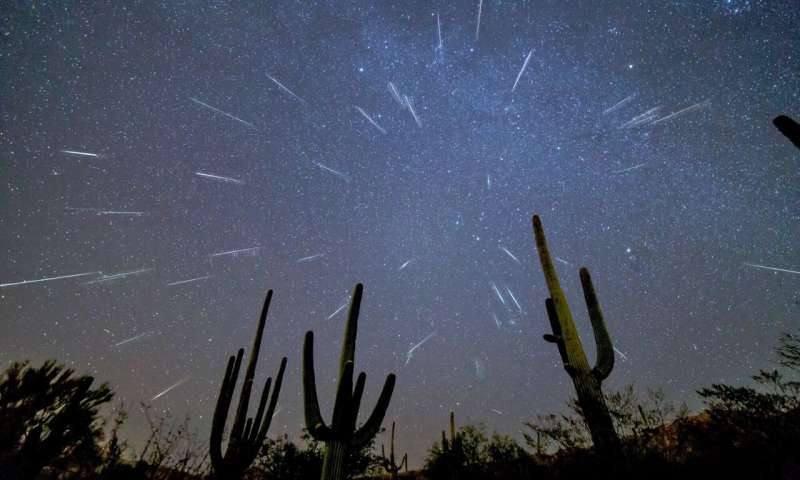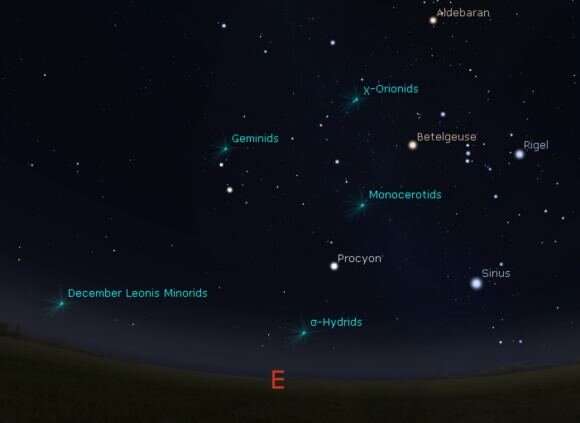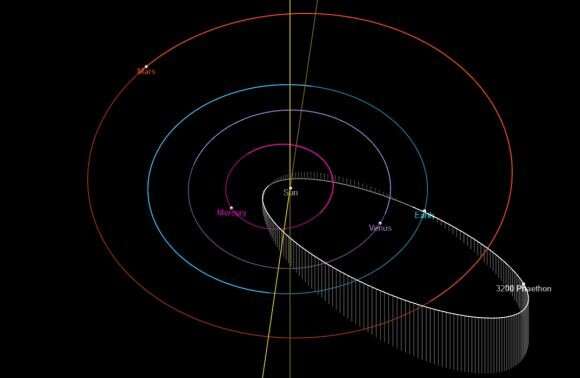Bundle up for the 2021 Geminid meteors

Ready to brave the cold? If you're like us, you haven't wasted an early clear sky morning to get out and see Comet C/2021 A1 Leonard before it heads southward. The coming days offer another early AM celestial sight: the Geminid meteors. To be sure, 2021 sees the Geminid meteors transpire under somewhat challenging conditions. But fear not: With a little planning and patience, you too can witness the "Tears of the Twins."
Circumstances for 2021: First, the bad news: the Geminids peak this year on Tuesday, December 14 at 7:00 Universal Time (UT) or ~2:00 AM EST, just over four days prior to full moon on the 19th. This puts the moon at 80 percent illumination waxing gibbous, meaning there's a narrow window of 'true darkness' between moonset and the beginning of dawn. For example, here in Norfolk, Virginia at latitude 37 degrees north, the moon sets at 2:53 AM EST on the 14th, and dawn begins at 5:37 AM EST just a few hours later. This month's full moon is also the 'long nights moon,' as the moon rides high in the sky just two days prior to the December 21 winter southward solstice.
But do not despair: The good news is, the Geminids are typically a strong shower, with an expected zenithal hourly rate of 120 meteors per hour in 2021. The shower also produces a high ratio of bright fireballs, another plus. Also, the radiant for the shower is located fairly far northward near Castor (Alpha Geminorum), meaning that unlike many meteor showers, you don't necessarily have to wait until past local midnight for the Geminids to get underway. In fact, I'd start vigil a night or two prior this coming weekend… the Geminids may very well already be active.

The source of the Geminids is rock-comet 3200 Phaethon, another bizarre aspect of the meteor shower. On a 1.4 year orbit around the sun, 3200 Phaethon seems to be an extinct cometary nucleus getting alternately baked and refrozen as it heats up and cools back down. 3200 Phaethon seems to be shedding a prodigious amount of material in the process, tiny fragments of which we see streaking through the night sky in the form of the Geminid meteors. JAXA wants to visit 3200 Phaethon with the DESTINY+ mission in 2024.

The Geminids: Past, present and future: First identified as a major shower back in 1862, the Geminids have really taken off in recent years. Back in the late 20th century, the Geminids were practically an obscure winter shower that few had heard of; fast-forward to the early 21st century, and the Geminids have surpassed the August Perseid meteors as the top draw of the year. Certainly, the Geminids have a bit of a PR problem, occurring as they do in the depths of northern hemisphere winter, but their dependable rates and broad span of activity make them worth braving the cold for. Other showers such as the Delta Aquariids and the Quadrantids (coming right up on January 3) are nearly mythical unicorns among meteor shower observers, with narrow peaks just a few hours long.

Enter the Ursids: Another December shower is active in the coming weeks: the Ursids peak with a ZHR of 10 to 15 on December 21–22. These fast-moving meteors hail from a radiant near Kochab (Beta Ursae Majoris), and come from source Comet 8P/Tuttle.
Don't miss a chance to catch the final astronomical act of 2021, with the Geminid meteors.
Provided by Universe Today





















